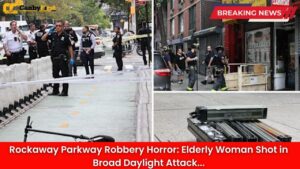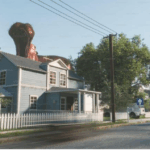Portland’s homelessness crisis has reached a breaking point. Despite unprecedented public spending and countless new programs, homelessness across the Portland metropolitan area — which includes Multnomah, Washington, and Clackamas counties — has soared by 61% in just two years, according to the latest data.
The most recent count found more than 12,000 people living without stable housing in the region. Nearly half of them are entirely unsheltered, residing in tents, cars, or makeshift camps on sidewalks and under bridges. Around 2,500 individuals report severe mental illness, and another 2,500 struggle with chronic substance abuse — painting a stark picture of how complex and deeply rooted the crisis has become.
Where Is All the Money Going?
In the last few years, Oregon’s leaders have committed record levels of funding to address homelessness. Governor Tina Kotek’s state budget allocates over $700 million toward housing and homelessness initiatives statewide. Meanwhile, Multnomah County’s Joint Office of Homeless Services (JOHS) operates with an enormous $350 million annual budget — a figure that has more than doubled in recent years. Much of this spending goes toward short-term shelter beds, administrative costs, and expanding outreach services.
Also Read
Despite the massive investments, the number of people sleeping outdoors continues to rise. Critics and taxpayers alike are now demanding greater transparency and accountability. The question on many residents’ minds remains the same: If billions are being spent, why is the problem worsening?
The Reality on the Streets
Experts and outreach workers say part of the answer lies in a difficult truth that public officials often avoid: not everyone living on the streets wants traditional housing.
Many unsheltered individuals, advocates say, decline shelter offers due to untreated mental illness, addiction, the strict behavioral rules inside shelters, or the loss of autonomy that comes with structured housing. Some even express a preference for the independence of living outdoors.
This reality complicates the long-standing political slogan that “housing ends homelessness.” For a large portion of the chronically homeless population, housing alone does not resolve the underlying causes — addiction, trauma, and mental health disorders.
While providing shelter can meet immediate needs, it does little to prevent people from cycling back into homelessness once rent subsidies expire or case management ends. Without stable, long-term treatment and mental health care, the system simply resets, producing the same outcome again and again.
A System Focused on Band-Aid Solutions
City leaders continue to pour money into emergency shelters, temporary camps, and pilot programs, often with little measurable success. Critics argue that this strategy prioritizes short-term optics over long-term impact.
Even members of the Portland City Council have acknowledged that Oregon ranks near the bottom nationally in access to mental health care. While the state has invested heavily in affordable housing, the lack of adequate treatment options and accountability mechanisms means the system remains overwhelmed.
Analysts and community groups are calling for a shift in focus — from simply providing housing units to building comprehensive rehabilitation programs that combine addiction recovery, psychiatric treatment, job training, and public safety enforcement.
“The approach we’ve taken isn’t compassion — it’s complacency dressed as progress,” one local advocate said. “Until leaders prioritize treatment, accountability, and enforcement alongside empathy, this crisis will only expand.”
Visible Impact Across the City
The consequences of Portland’s worsening homelessness crisis are visible across the city’s streets. Open drug use, especially involving fentanyl and methamphetamine, has become a common sight near public spaces, bus stops, and parks. Paramedics and outreach workers report responding to multiple overdose calls every day, often involving the same individuals.
According to county data, drug-related deaths among unhoused people have more than doubled over the past few years, signaling a public health emergency that cannot be solved by shelter access alone.
Meanwhile, small business owners are bearing the economic cost. Shops in downtown Portland and along major commercial corridors have reported rising vandalism, theft, and safety incidents, driving customers away. Once-vibrant neighborhoods now struggle with declining foot traffic, and several long-standing businesses have closed or relocated.
A Broader Civic Crisis
What began as a housing issue has evolved into a full-scale civic crisis — impacting not only those living on the streets but also residents, workers, and visitors. As homelessness spreads and safety concerns rise, Portland’s reputation as a progressive, livable city faces serious challenges.
While there are no easy solutions, experts stress that any meaningful progress will require a unified regional strategy focused on accountability, coordinated spending, and comprehensive care — not fragmented short-term efforts.
Until city and state leaders confront the intertwined realities of addiction, mental illness, and poverty, the numbers will likely continue to climb, no matter how much money is spent.












